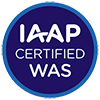Mobile and native application accessibility
A-2-Z Internet Accessibility and Marketing
Mobile accessibility
A-2-Z Internet Accessibility and Marketing
CONTACT US FOR FREE SAMPLE ACCESSIBILITY CHECK
According to Statista, mobile Internet users made up 91 percent of the 4.66 billion internet users across the globe as of October 2020. That number illustrates the vital role that mobile applications now play in daily life. There are apps to access everything from health care records to grocery price comparisons to paying bills online. The ease of mobile app usage facilitates everyday tasks, but for those members of society who are dealing with a disability, the process is often anything but easy. That’s bad for your customer and bad for your business too.
Mobile app accessibility is imperative and ought to be available for people with the following disabilities:
- Vision impairment for those who are either blind or suffer from a limited ability to see the screen
- Hearing impairment for the deaf or those who have difficulty hearing
- Cognitive and learning impairment for people with learning disabilities and cognition limitations
- Compromised mobility and motor skills for those who have physical disabilities
Mobile Accessibility Issues Addressed by W3C
- Reduced screen size
- Complications resulting from phones with touchscreens
- Pressure sensors that enable speech and 3D-touch features
- Impact of setting, such as sunlight glare, on device use
Here at A-2-Z Internet Accessibility and Marketing, we use World Wide Web Consortium (W3C) standards-based testing to ensure that your website content is accessible and that you’re following best practices to maintain mobile-friendly content. As a member organization of IAAP, A-2-Z is a participant in the international mission to create website standards and guidelines that make digital accessibility more inclusive for all segments of the population. In order to ensure that people with disabilities have the same access to mobile applications enjoyed by people without disabilities, smart phone apps and tablet mobile apps are tested using the native assistive technologies of the most commonly used operating systems and their default browsers: Apple iOS with the Safari browser; Android with Chrome and other android-compatible browsers.
Mobile Accessibility
Making applications more accessible is the simplest way to ensure that smartphones, tablets, wearables and other devices can be adapted for the disabled population. Is your digital accessibility all that it can be so that users with disabilities are aware of what services your company offers? A-2-Z testing can answer the questions you’re asking about which customers might be missing out on your services.
Resources Used by A-2-Z to Re-Tool Your Digital Accessibility
Web Content Accessibility Guidelines (WCAG 2.1 AA standards) serve as a guide to the ways that websites can be more accessible to people with disabilities
Mobile Web Best Practices (MWBP) show how mobile devices can provide easy access to websites
Mobile Web Application Best Practices (MWABP) explain how to develop and deliver web applications to mobile devices
A-2-Z Internet Accessibility and Marketing is a web accessibility agency whose technological expertise has enhanced digital accessibility for banking, government, academic and other fields. We are committed to ensuring that members of the disabled community are not denied access to features that have made technology an integral part of our daily lives.


